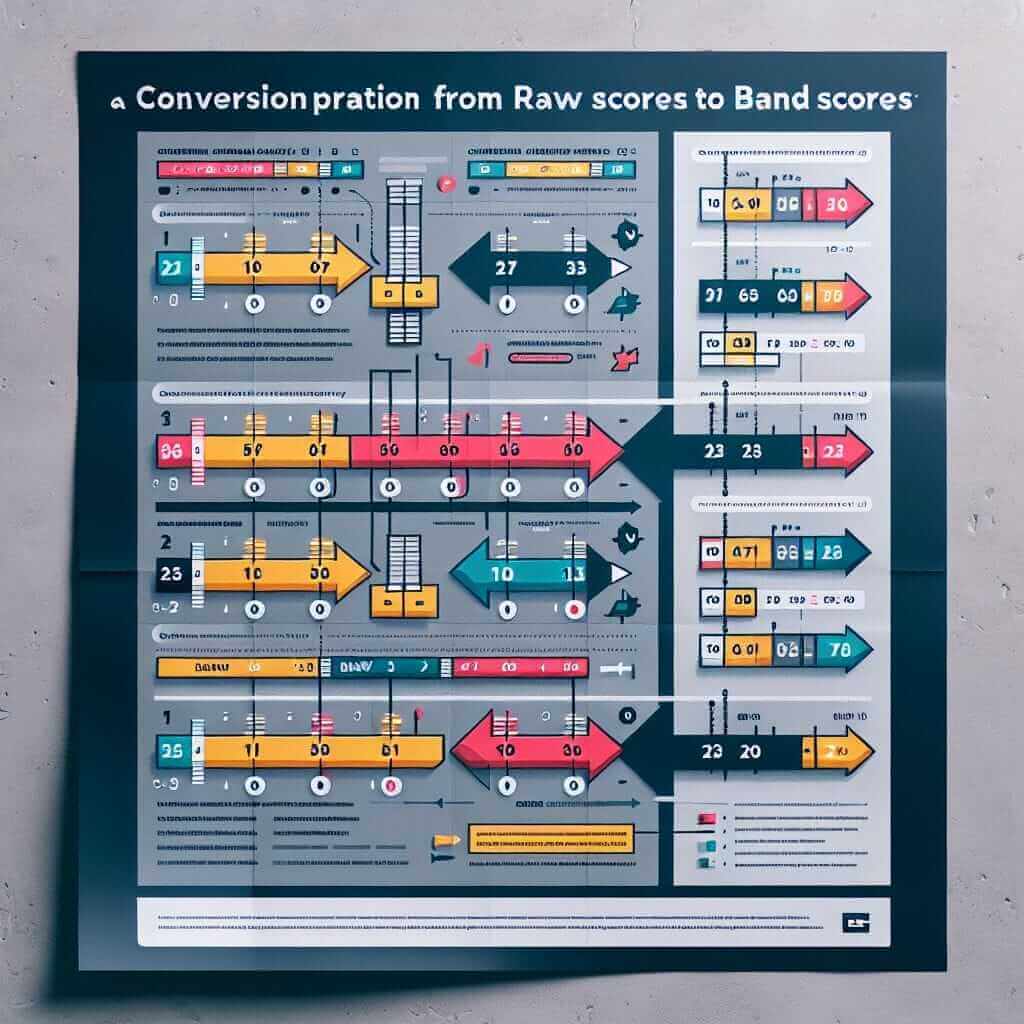As an IELTS instructor with over 20 years of experience, I understand that the IELTS Listening test can be challenging. One of the most common questions I receive from my students is, “How is the IELTS Listening score calculated?”. Understanding the scoring system can be incredibly helpful in your preparation, allowing you to focus your efforts and build confidence.
This comprehensive guide will demystify the IELTS Listening scoring process and provide you with valuable insights to maximize your score.
Understanding the IELTS Listening Test Format
Before we delve into the scoring, let’s quickly recap the structure of the IELTS Listening test:
- 4 Sections: The test comprises four sections, each with 10 questions, making a total of 40 questions.
- Variety of Accents: You will encounter a range of native English accents, including British, American, Australian, and Canadian.
- Once Only: Remember, you will only hear each recording once.
How Your IELTS Listening Score is Calculated
The IELTS Listening test uses a band score system, ranging from band 1 (non-user) to band 9 (expert user). Your raw score (the number of correct answers) is converted into a band score.
Here’s a general overview of the band score conversion:
| Band Score | Raw Score (Approximate) |
|---|---|
| 9 | 39-40 |
| 8 | 37-38 |
| 7 | 35-36 |
| 6 | 32-34 |
| 5 | 28-31 |
| 4 | 23-27 |
| 3 | 18-22 |
| 2 | 11-17 |
| 1 | 3-10 |
| 0 | Did not attempt the test |
Important Considerations:
- No Negative Marking: Don’t leave any answers blank! There are no penalties for incorrect answers.
- Rounding: Band scores are rounded to the nearest half or whole band. For example, a raw score of 26 might translate to a band score of 5.5.

Strategies for Maximizing Your Score
Now that you understand the scoring system, let’s discuss some proven strategies to boost your performance:
1. Practice with Authentic Materials
Familiarize yourself with various English accents by listening to podcasts, watching English news channels, and engaging with English movies or TV shows.
2. Focus on Keywords and Prediction
Before each recording, quickly scan the questions and identify keywords. This will help you anticipate information and focus your listening.
3. Pay Attention to Instructions
Carefully read and listen to the instructions for each section. They contain crucial information about the context and the type of answers required.
4. Manage Your Time Effectively
Use the time provided to preview the questions and plan your answers. Avoid spending too much time on a single question.
5. Transfer Answers Carefully
At the end of the test, you will have 10 minutes to transfer your answers to the answer sheet. Be meticulous and double-check for any errors.
Example from a Real IELTS Listening Test
Let’s analyze a sample question from a real IELTS Listening test:
Question Type: Multiple Choice
Recording Script:
“The museum is open every day except Mondays. The opening hours are from 10 a.m. to 5 p.m., with the last admission at 4:30 p.m.”
Question:
What time does the museum close?
A. 4:30 p.m.
B. 5:00 p.m.
C. 10:00 a.m.
Answer: B. 5:00 p.m.
Explanation:
The recording clearly states, “The opening hours are from 10 a.m. to 5 p.m.”, indicating that the museum closes at 5:00 p.m.
Conclusion
While the IELTS Listening test may seem daunting, understanding the scoring system and implementing effective strategies can significantly improve your performance. Consistent practice, focused listening, and careful attention to detail will pave the way to achieving your desired band score. Good luck!